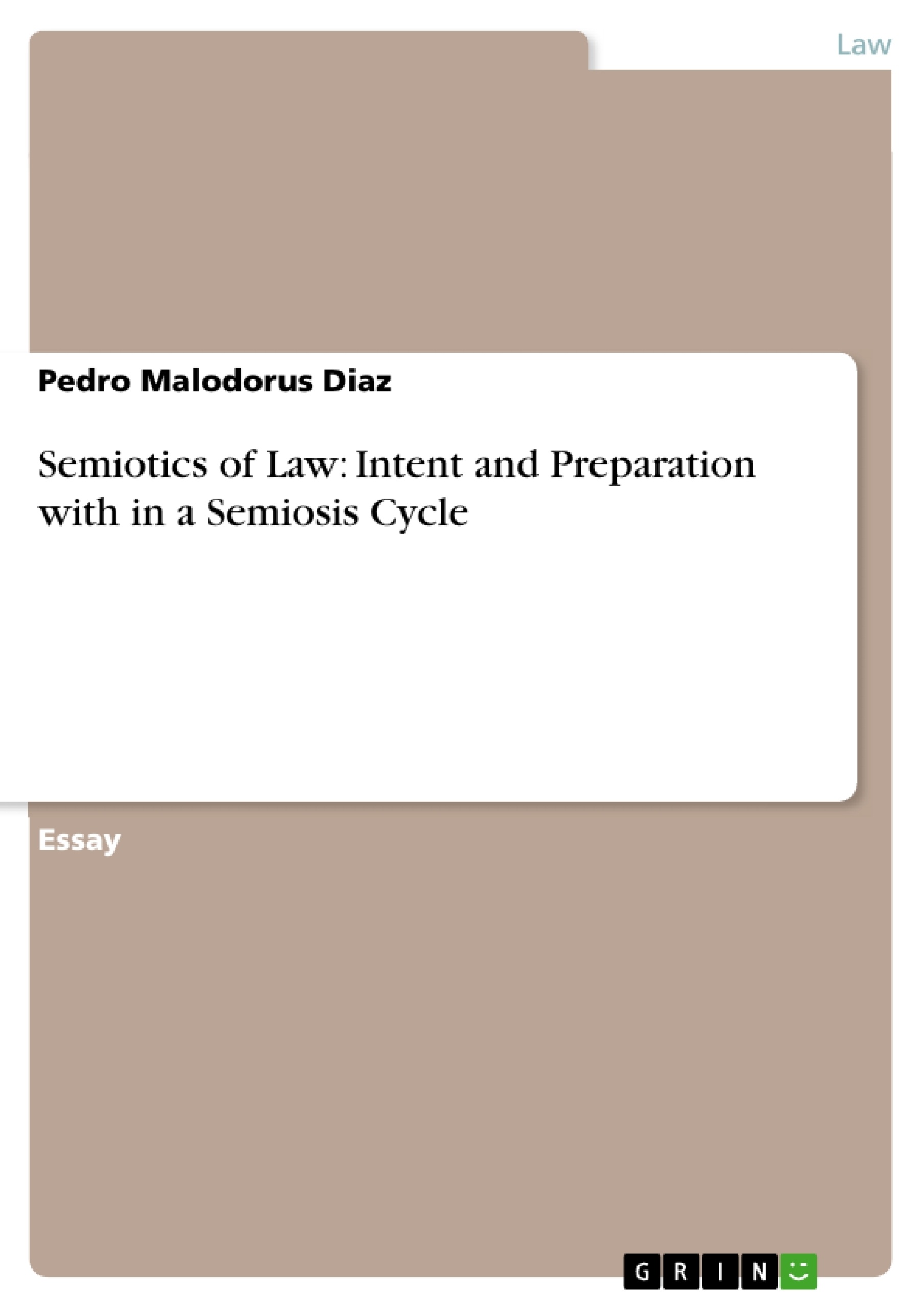Excerpt
Introduction
This paper examines the legal impossibility that exists when Law Enforcement introduces evidence of a violation of law. Where Law enforcement creates hyper-real entities and uses these entities as actual real victims to prosecute cases involving computer crimes. The courts, prosecutors and juries fail to understand that a symbolic character across the computational medium, the umwelt is not and cannot ever become real simply because law enforcement claims so.
Reality can only exist within the realm where we as humans exist. Hyper-reality remains at a realm that only our minds can imagine. The umwelt is that area that buffers reality from hyper-reality. Television exemplifies this argument, a person watching television can only become so involved with his/her favorite show and no matter how involved the person is - it can never cross that medium that separates them from that show. The Hypothetical Detective claiming to have understood the intentions of the suspect across that medium is only deceiving himself.
Umberto Eco has been quoted as saying…”The battle for survival as a responsible human in the communication era is not to be won where communication begins, but where it ends. When Law enforcement takes it upon itself to ensnare an individual and fails to define full intent and preparation within the semiosis cycle it becomes a legal impossibility.
“Abstract”
It is a legal impossibility that an object/symbolic entity that police departments create actually exist. Law enforcement creates an entity that tests the boundaries of semiotics. Since semiotics is easier to define by what is not rather than what is. Semiotics links linguistic and non-linguistic information to offer plausible conclusions that place the interpretation of language in a social context also known as semiosphere or for this purpose – a chat room. The recursive nature of computers allows for interesting questions regarding the believability of law enforcement’s created entity.
A referential fallacy exists – the fact that simply because an object exists, doesn’t necessarily follow that the object/symbol really exists. The entity created by law enforcement is an effort by them to deceive another party through a computational medium i.e., a chat room. The hyper-real diorama law enforcement and the second party (suspect) create only exists in a hyper-real world, therefore, a legal impossibility to show that criminal solicitation, online solicitation or that any crime occurred, It is impossible to determine the thoughts of an individual across a computational medium. Proving intent and preparation is difficult to do unless the second party (suspect) removes himself from that hyper-real medium, leaves the computer, the house and travels to a predetermined location in which case intent and preparation could be said to occur. Even so, leaving many questions unanswered.
Typically, intent and preparation is difficult to prove yet law enforcement agencies continue to push the envelope when it comes to prosecution. Law enforcement agencies go to some effort to create the elements of intent and preparation. Often time’s law enforcement finds itself continuing with investigations even though the elements are not present, by each party creating their own symbolic entities – already a communication problem exits confusing messages can be exchanged. For example a series of commercials create hidden messages which will either be recognized by the viewing public or not. As an example, talking infants, talking dogs, cows during commercials, do animals really speak? What are the messages conveyed?
Returning to Intent and Preparation Law enforcement is forced to create intent and preparation by suggesting to the suspect at other side of the computational medium that he is seeking the company of an underage female. The suggestion to meet with the female is a non-real event. Through mere conversation law enforcement, prosecutors, grand juries, cannot and should not true bill or prosecute such cases regardless of the dialog. Law enforcement is unable to determine the true thoughts of the suspect’s mind. The preparation is determined by getting the suspect to 1. Drive to a location, 2. Purchase items to use along with intent. So, if Joe Public (suspect) does not show up to the predetermined location then preparation is completely non-existent. Both the entity of law enforcement and Joe Public remain at the computational medium. This is to say that the umwelt created by law enforcement only existed in hyper-reality. Hence, the diorama is in fact not real! Intent and Preparation components are non-existent. What is not real, cannot become real because law enforcement makes it so. Both Grand Jury and Jury can error because of the lacking of legal sufficiency to indict and or decide on a trial.
Because the juries fail to understand the complexities of computational semiotics, Juries are unable to discern the facts of such cases – they lack the ability to understand the semiosis cycle within a digitalized environment. Juries fail to understand computational semiotics therefore, unable to make clear, true and correct determinations thus putting to question 1. How can a true bill be concluded 2? How a sentence can be handed down. Hence, legal suffiency is in question! The question that must be fully understood by juries is where exactly does law enforcement’s object/entity exist, in the mind of law enforcement, in the chat room, the servers, or across the cyber medium? Where exactly do these entities exist?
Legal Impossibility
A hypothetical; forty-five year old Hispanic male is arrested on August 8, 2004, charged with Aggravated Sexual Assault. He is accused of attempting to solicit a 17 year old female over the internet. In actuality it is a fifty-plus year old detective Bruce Steven Marshall who passes himself off as a sixteen year old Molly Shaw, who is deaf and home alone for the summer, seeking an older male to befriend her. A typical online sting operation!
[...]
- Quote paper
- Pedro Malodorus Diaz (Author), 2010, Semiotics of Law: Intent and Preparation with in a Semiosis Cycle, Munich, GRIN Verlag, https://www.grin.com/document/204378
Publish now - it's free






















Comments